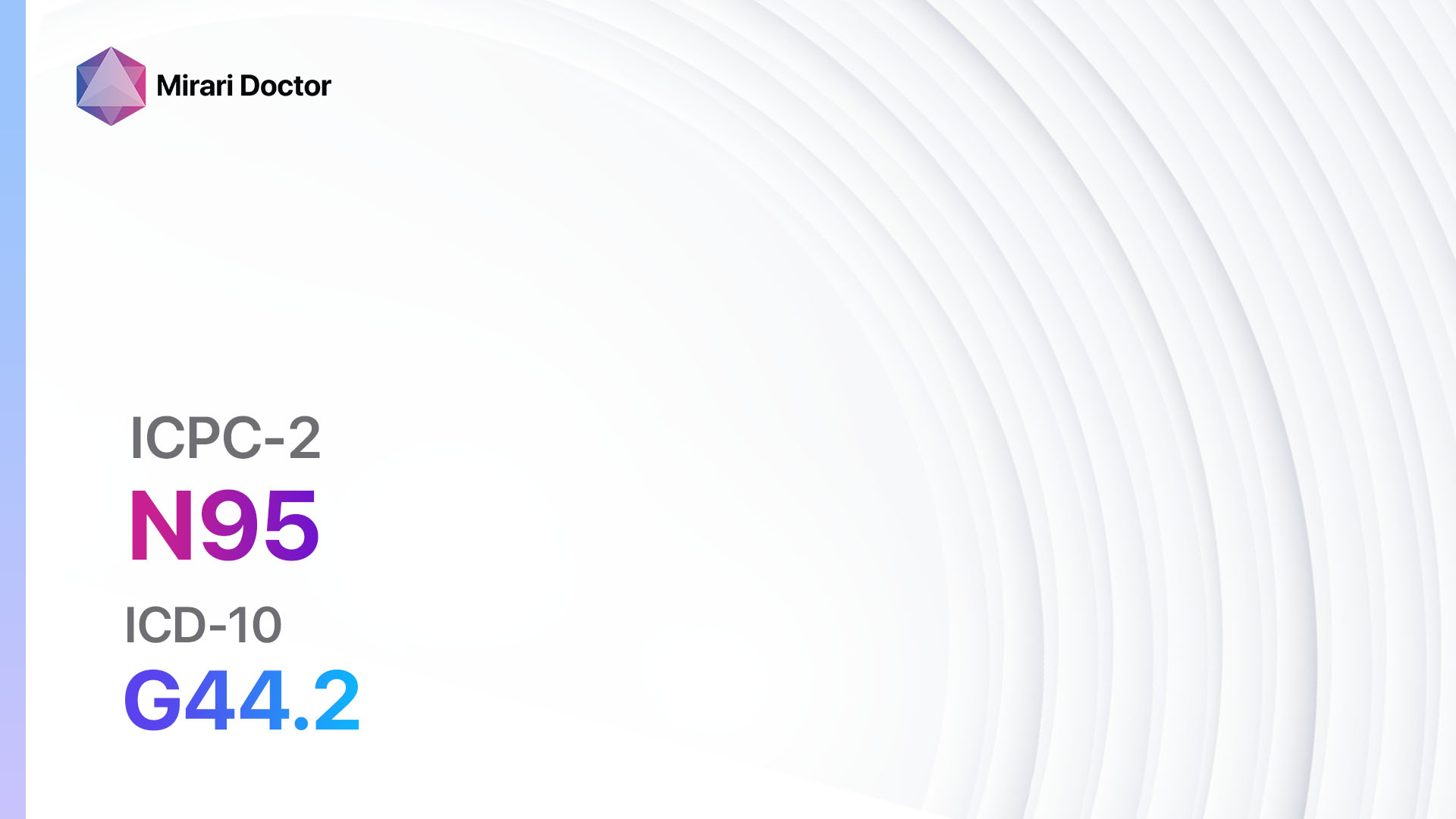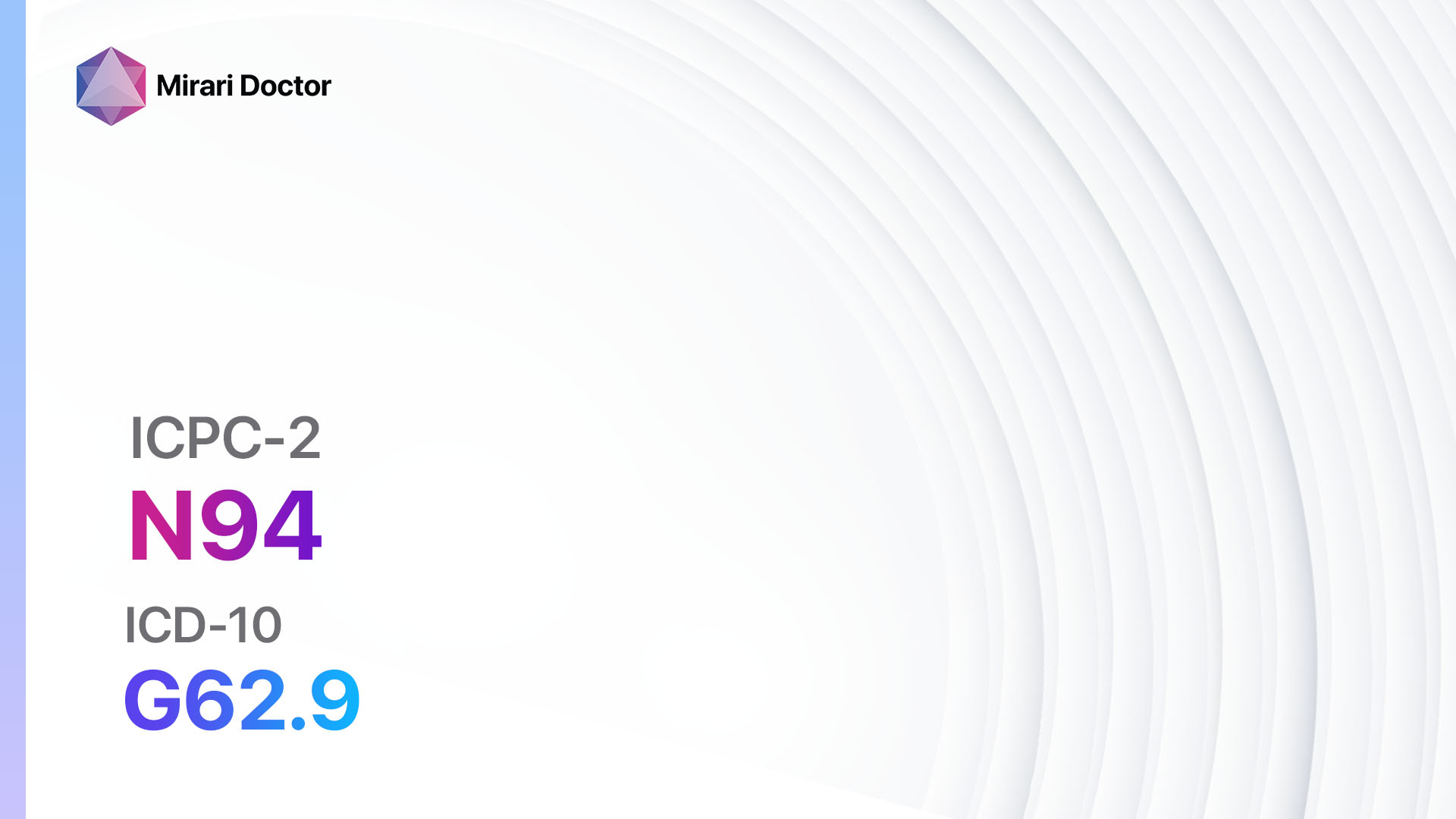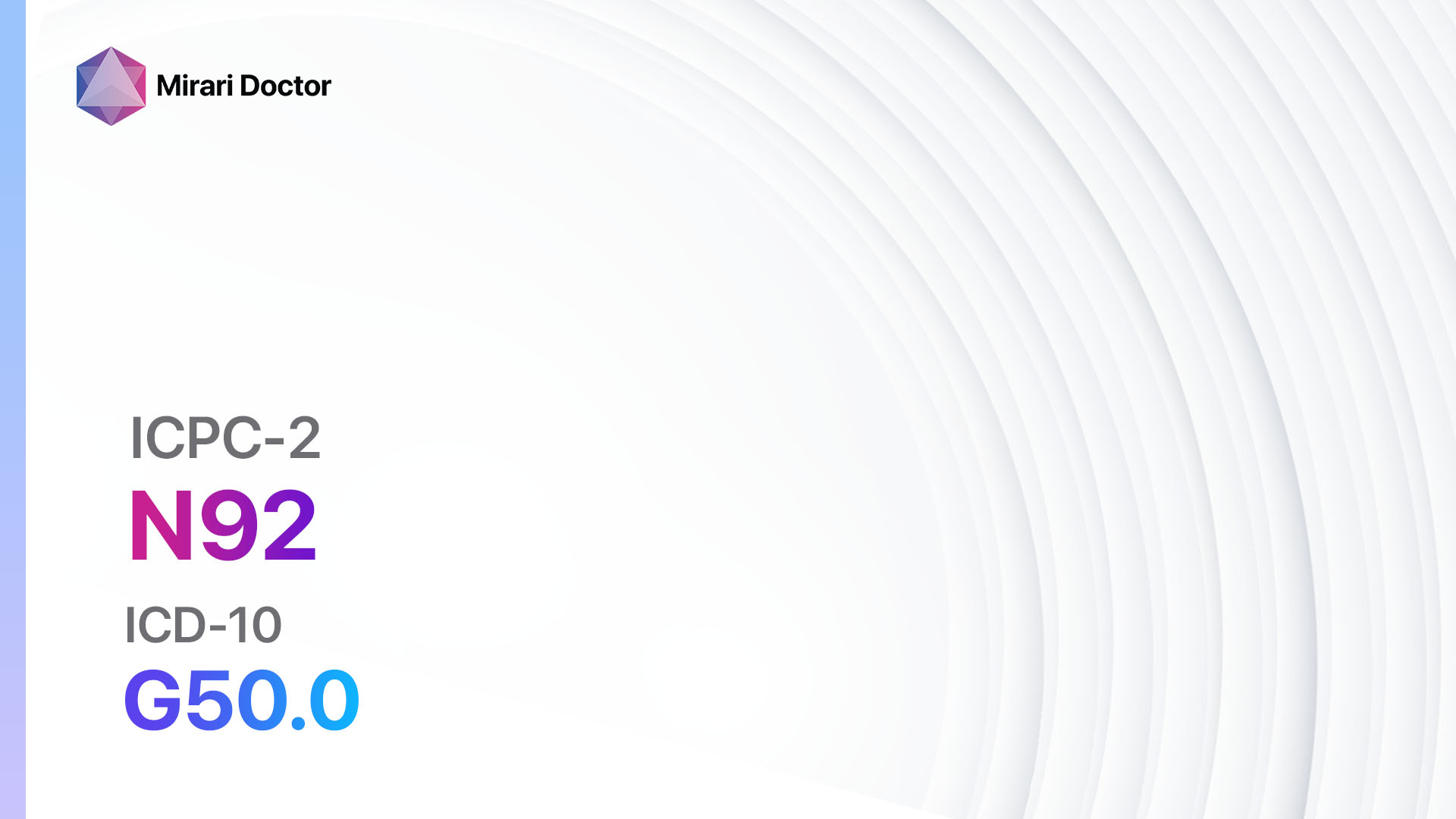
Introduction
Speech disorder refers to a condition in which an individual has difficulty producing speech sounds correctly or fluently. It can affect the clarity, rhythm, and speed of speech, making it challenging for individuals to communicate effectively.[1] This guide aims to provide an overview of speech disorder, including its symptoms, causes, diagnostic steps, possible interventions, and lifestyle modifications.
Codes
Symptoms
- Articulation difficulties: Difficulty pronouncing certain sounds or words.
- Phonological disorders: Difficulty organizing speech sounds into patterns.
- Stuttering: Repetitions, prolongations, or blocks in speech.
- Voice disorders: Abnormal pitch, loudness, or quality of voice.
- Fluency disorders: Interruptions in the flow of speech, such as repetitions or hesitations.[4]
Causes
- Developmental factors: Speech disorders can arise due to delays or abnormalities in the development of speech and language skills.
- Neurological conditions: Certain neurological conditions, such as cerebral palsy or stroke, can affect the muscles and nerves involved in speech production.
- Structural abnormalities: Physical abnormalities in the speech organs, such as cleft palate or vocal cord paralysis, can lead to speech disorders.
- Hearing loss: Individuals with hearing loss may have difficulty producing speech sounds accurately.[5]
Diagnostic Steps
Medical History
- Gather information about the patient’s developmental milestones, including speech and language development.
- Inquire about any family history of speech disorders or other related conditions.
- Assess the patient’s overall health and any medical conditions that may contribute to speech difficulties.[6]
Physical Examination
- Examine the oral structures involved in speech production, such as the lips, tongue, and palate.
- Evaluate the coordination and movement of these structures during speech.
- Assess the patient’s hearing abilities to rule out any hearing loss-related speech disorders.[7]
Laboratory Tests
- There are no specific laboratory tests for diagnosing speech disorders. However, certain tests may be conducted to rule out underlying medical conditions or assess hearing abilities.[8]
Diagnostic Imaging
- Diagnostic imaging, such as MRI or CT scans, may be recommended in cases where structural abnormalities or neurological conditions are suspected to be causing the speech disorder.[9]
Other Tests
- Speech and language assessments: Conduct standardized tests to evaluate the patient’s speech and language abilities, including articulation, phonology, fluency, and voice.
- Hearing tests: Assess the patient’s hearing abilities to determine if hearing loss is contributing to the speech disorder.[10]
Follow-up and Patient Education
- Provide appropriate referrals to speech-language pathologists for further evaluation and intervention.
- Educate the patient and their family about the nature of the speech disorder and the available treatment options.
- Schedule regular follow-up appointments to monitor progress and make any necessary adjustments to the treatment plan.
Possible Interventions
Traditional Interventions
Medications:
Top 5 drugs for Speech disorder:
- Antipsychotics (e.g., Risperidone, Aripiprazole):
- Cost: $10-$500/month.
- Contraindications: Hypersensitivity to the medication, history of neuroleptic malignant syndrome.
- Side effects: Drowsiness, weight gain, extrapyramidal symptoms.
- Severe side effects: Tardive dyskinesia, agranulocytosis.
- Drug interactions: Other antipsychotics, medications that prolong the QT interval.
- Warning: Regular monitoring for side effects and therapeutic response is necessary.
- Selective Serotonin Reuptake Inhibitors (SSRIs) (e.g., Fluoxetine, Sertraline):
- Cost: $4-$150/month.
- Contraindications: Hypersensitivity to the medication, concurrent use of monoamine oxidase inhibitors (MAOIs).
- Side effects: Nausea, headache, sexual dysfunction.
- Severe side effects: Serotonin syndrome, suicidal ideation.
- Drug interactions: MAOIs, other medications that increase serotonin levels.
- Warning: Close monitoring for side effects and therapeutic response is necessary.
- Stimulant medications (e.g., Methylphenidate, Dextroamphetamine):
- Cost: $10-$300/month.
- Contraindications: Hypersensitivity to the medication, history of cardiovascular disease.
- Side effects: Insomnia, decreased appetite, increased heart rate.
- Severe side effects: Psychosis, cardiovascular events.
- Drug interactions: MAOIs, other stimulant medications.
- Warning: Regular monitoring for side effects and therapeutic response is necessary.
- Anticonvulsants (e.g., Carbamazepine, Valproic acid):
- Cost: $10-$200/month.
- Contraindications: Hypersensitivity to the medication, history of bone marrow suppression.
- Side effects: Drowsiness, dizziness, gastrointestinal disturbances.
- Severe side effects: Stevens-Johnson syndrome, hepatotoxicity.
- Drug interactions: Other anticonvulsants, medications that affect liver enzymes.
- Warning: Regular monitoring for side effects and therapeutic response is necessary.
- Muscle relaxants (e.g., Baclofen, Tizanidine):
- Cost: $10-$100/month.
- Contraindications: Hypersensitivity to the medication, history of seizure disorder.
- Side effects: Drowsiness, dizziness, dry mouth.
- Severe side effects: Hallucinations, liver dysfunction.
- Drug interactions: Other muscle relaxants, medications that cause sedation.
- Warning: Regular monitoring for side effects and therapeutic response is necessary.
Alternative Drugs:
- Botulinum toxin injections: Used to treat specific speech disorders caused by muscle spasms. Cost: $500-$1500 per treatment session.
- Propranolol: Beta-blocker medication that may help reduce symptoms of stuttering. Cost: $10-$50/month.
- Baclofen: Muscle relaxant that can be used to treat speech disorders associated with spasticity. Cost: $10-$100/month.
- Gabapentin: Anticonvulsant medication that may be beneficial for certain speech disorders. Cost: $10-$50/month.
- Memantine: NMDA receptor antagonist that has shown promise in the treatment of some speech disorders. Cost: $10-$200/month.
Surgical Procedures:
- Surgical interventions are not typically used as primary treatments for speech disorders. However, in cases where structural abnormalities or neurological conditions require surgical correction, procedures such as cleft palate repair or vocal cord surgery may be performed. Cost: Varies depending on the specific procedure and location.
Alternative Interventions
- Speech therapy: Engaging in regular speech therapy sessions with a qualified speech-language pathologist can help improve speech production and communication skills. Cost: $100-$250 per session.
- Oral motor exercises: Specific exercises targeting the muscles involved in speech production can be beneficial in improving speech clarity. Cost: Varies depending on the availability of specialized therapists.
- Augmentative and alternative communication (AAC) devices: These devices, such as speech-generating devices or communication boards, can assist individuals with severe speech disorders in expressing themselves. Cost: $500-$5000, depending on the device.
- Biofeedback therapy: This therapy uses electronic devices to provide feedback on speech production, helping individuals improve their articulation and fluency. Cost: $100-$200 per session.
- Music therapy: Incorporating music into speech therapy sessions can enhance speech production and rhythm. Cost: $50-$150 per session.
Lifestyle Interventions
- Healthy diet: Consuming a balanced diet rich in nutrients can support overall health, including speech and language development. Cost: Varies depending on individual dietary choices.
- Regular exercise: Engaging in physical activities can improve overall muscle coordination, including the muscles involved in speech production. Cost: Varies depending on individual preferences and access to exercise facilities.
- Stress management techniques: Learning and practicing stress management techniques, such as deep breathing or meditation, can help reduce speech-related anxiety and improve fluency. Cost: Varies depending on individual preferences and access to resources.
- Avoidance of speech irritants: Identifying and avoiding substances or activities that irritate the vocal cords, such as smoking or excessive shouting, can help maintain vocal health. Cost: Varies depending on individual choices and habits.
- Support groups: Joining support groups or seeking counseling can provide emotional support and guidance for individuals with speech disorders. Cost: Varies depending on the availability of support groups and counseling services.
It is important to note that the cost ranges provided are approximate and may vary depending on the location and availability of the interventions. It is recommended to consult with healthcare professionals and insurance providers for accurate cost information and coverage options.
Mirari Cold Plasma Alternative Intervention
Understanding Mirari Cold Plasma
- Safe and Non-Invasive Treatment: Mirari Cold Plasma is a safe and non-invasive treatment option for various skin conditions. It does not require incisions, minimizing the risk of scarring, bleeding, or tissue damage.
- Efficient Extraction of Foreign Bodies: Mirari Cold Plasma facilitates the removal of foreign bodies from the skin by degrading and dissociating organic matter, allowing easier access and extraction.
- Pain Reduction and Comfort: Mirari Cold Plasma has a local analgesic effect, providing pain relief during the treatment, making it more comfortable for the patient.
- Reduced Risk of Infection: Mirari Cold Plasma has antimicrobial properties, effectively killing bacteria and reducing the risk of infection.
- Accelerated Healing and Minimal Scarring: Mirari Cold Plasma stimulates wound healing and tissue regeneration, reducing healing time and minimizing the formation of scars.
Mirari Cold Plasma Prescription
Video instructions for using Mirari Cold Plasma Device – N19 Speech disorder (ICD-10:R47.8)
| Mild | Moderate | Severe |
| Mode setting: 2 (Wound Healing) Location: 7 (Neuro system & ENT) Morning: 15 minutes, Evening: 15 minutes |
Mode setting: 2 (Wound Healing) Location: 7 (Neuro system & ENT) Morning: 30 minutes, Lunch: 30 minutes, Evening: 30 minutes |
Mode setting: 2 (Wound Healing) Location: 7 (Neuro system & ENT) Morning: 30 minutes, Lunch: 30 minutes, Evening: 30 minutes |
| Mode setting: 7 (Immunotherapy) Location: 7 (Neuro system & ENT) Morning: 15 minutes, Evening: 15 minutes |
Mode setting: 7 (Immunotherapy) Location: 7 (Neuro system & ENT) Morning: 30 minutes, Lunch: 30 minutes, Evening: 30 minutes |
Mode setting: 7 (Immunotherapy) Location: 7 (Neuro system & ENT) Morning: 30 minutes, Lunch: 30 minutes, Evening: 30 minutes |
| Mode setting: 7 (Immunotherapy) Location: 4 (Heart, Bile & Pancreas) Morning: 15 minutes, Evening: 15 minutes |
Mode setting: 7 (Immunotherapy) Location: 4 (Heart, Bile & Pancreas) Morning: 30 minutes, Lunch: 30 minutes, Evening: 30 minutes |
Mode setting: 7 (Immunotherapy) Location: 4 (Heart, Bile & Pancreas) Morning: 30 minutes, Lunch: 30 minutes, Evening: 30 minutes |
| Total Morning: 45 minutes approx. $7.50 USD, Evening: 45 minutes approx. $7.50 USD |
Total Morning: 90 minutes approx. $15 USD, Lunch: 90 minutes approx. $15 USD, Evening: 90 minutes approx. $15 USD, |
Total Morning: 90 minutes approx. $15 USD, Lunch: 90 minutes approx. $15 USD, Evening: 90 minutes approx. $15 USD, |
| Usual treatment for 7-60 days approx. $105 USD – $900 USD | Usual treatment for 6-8 weeks approx. $1,890 USD – $2,520 USD |
Usual treatment for 3-6 months approx. $4,050 USD – $8,100 USD
|
 |
|
Use the Mirari Cold Plasma device to treat Speech disorder effectively.
WARNING: MIRARI COLD PLASMA IS DESIGNED FOR THE HUMAN BODY WITHOUT ANY ARTIFICIAL OR THIRD PARTY PRODUCTS. USE OF OTHER PRODUCTS IN COMBINATION WITH MIRARI COLD PLASMA MAY CAUSE UNPREDICTABLE EFFECTS, HARM OR INJURY. PLEASE CONSULT A MEDICAL PROFESSIONAL BEFORE COMBINING ANY OTHER PRODUCTS WITH USE OF MIRARI.
Step 1: Cleanse the Skin
- Start by cleaning the affected area of the skin with a gentle cleanser or mild soap and water. Gently pat the area dry with a clean towel.
Step 2: Prepare the Mirari Cold Plasma device
- Ensure that the Mirari Cold Plasma device is fully charged or has fresh batteries as per the manufacturer’s instructions. Make sure the device is clean and in good working condition.
- Switch on the Mirari device using the power button or by following the specific instructions provided with the device.
- Some Mirari devices may have adjustable settings for intensity or treatment duration. Follow the manufacturer’s instructions to select the appropriate settings based on your needs and the recommended guidelines.
Step 3: Apply the Device
- Place the Mirari device in direct contact with the affected area of the skin. Gently glide or hold the device over the skin surface, ensuring even coverage of the area experiencing.
- Slowly move the Mirari device in a circular motion or follow a specific pattern as indicated in the user manual. This helps ensure thorough treatment coverage.
Step 4: Monitor and Assess:
- Keep track of your progress and evaluate the effectiveness of the Mirari device in managing your Speech disorder. If you have any concerns or notice any adverse reactions, consult with your health care professional.
Note
This guide is for informational purposes only and should not replace the advice of a medical professional. Always consult with your healthcare provider or a qualified medical professional for personal advice, diagnosis, or treatment. Do not solely rely on the information presented here for decisions about your health. Use of this information is at your own risk. The authors of this guide, nor any associated entities or platforms, are not responsible for any potential adverse effects or outcomes based on the content.
Mirari Cold Plasma System Disclaimer
- Purpose: The Mirari Cold Plasma System is a Class 2 medical device designed for use by trained healthcare professionals. It is registered for use in Thailand and Vietnam. It is not intended for use outside of these locations.
- Informational Use: The content and information provided with the device are for educational and informational purposes only. They are not a substitute for professional medical advice or care.
- Variable Outcomes: While the device is approved for specific uses, individual outcomes can differ. We do not assert or guarantee specific medical outcomes.
- Consultation: Prior to utilizing the device or making decisions based on its content, it is essential to consult with a Certified Mirari Tele-Therapist and your medical healthcare provider regarding specific protocols.
- Liability: By using this device, users are acknowledging and accepting all potential risks. Neither the manufacturer nor the distributor will be held accountable for any adverse reactions, injuries, or damages stemming from its use.
- Geographical Availability: This device has received approval for designated purposes by the Thai and Vietnam FDA. As of now, outside of Thailand and Vietnam, the Mirari Cold Plasma System is not available for purchase or use.
References
- American Speech-Language-Hearing Association. (2021). Speech Sound Disorders. Retrieved from https://www.asha.org/public/speech/disorders/speech-sound-disorders/
- World Health Organization. (2021). International Classification of Primary Care, Second edition (ICPC-2). Retrieved from https://www.who.int/standards/classifications/other-classifications/international-classification-of-primary-care
- World Health Organization. (2021). International Classification of Diseases, 10th Revision (ICD-10). Retrieved from https://icd.who.int/browse10/2019/en
- National Institute on Deafness and Other Communication Disorders. (2021). What are voice, speech, and language? Retrieved from https://www.nidcd.nih.gov/health/voice-speech-and-language
- Mayo Clinic. (2021). Speech disorders. Retrieved from https://www.mayoclinic.org/diseases-conditions/speech-disorders/symptoms-causes/syc-20353229
- American Academy of Pediatrics. (2021). Diagnosing Speech and Language Disorders. Retrieved from https://www.healthychildren.org/English/health-issues/conditions/developmental-disabilities/Pages/Speech-and-Language-Disorders.aspx
- Centers for Disease Control and Prevention. (2021). Developmental Monitoring and Screening. Retrieved from https://www.cdc.gov/ncbddd/childdevelopment/screening.html
- National Health Service. (2021). Speech and language disorders. Retrieved from https://www.nhs.uk/conditions/speech-and-language-disorders/
- Radiological Society of North America. (2021). Head and Neck Cancer Imaging. Retrieved from https://www.radiologyinfo.org/en/info.cfm?pg=headneck
- American Speech-Language-Hearing Association. (2021). Assessment and Evaluation of Speech-Language Disorders in Schools. Retrieved from https://www.asha.org/slp/assessment-and-evaluation-of-speech-language-disorders-in-schools/
Related articles
Made in USA




























